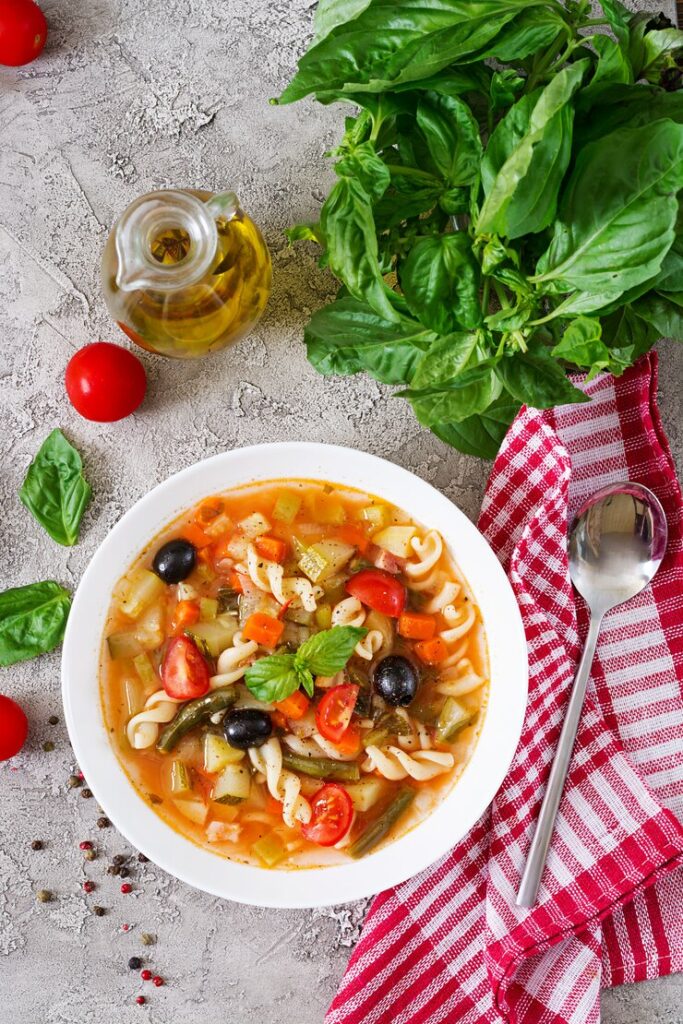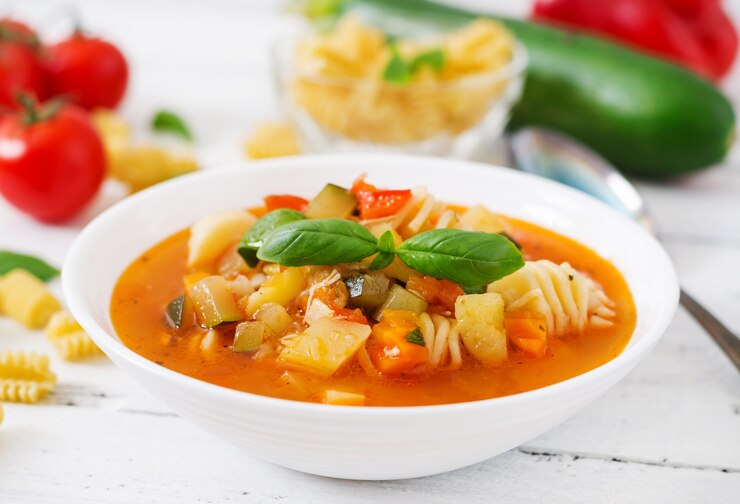Minestrone soup is a dish that never goes out of style. Its beauty lies in its adaptability—changing with the seasons, welcoming whatever the market or garden has to offer, and always promising a bowl full of comfort. Let’s take a journey through the year, exploring how minestrone soup can be fresh, flavorful, and filling in every season.
The Roots: What Makes Minestrone Soup Special?
Minestrone soup is an Italian classic, but it’s not defined by a rigid recipe. Instead, it’s a celebration of vegetables, beans, and grains, simmered together in a savory broth. Its origins are humble, born from the need to make the most of whatever was on hand. Over time, it’s become a beloved staple, known for its hearty texture and vibrant flavors.
The Base: Building Flavor from the Ground Up
Every great minestrone soup starts with a base of onions, carrots, and celery—sautéed gently in olive oil to release their sweetness. This trio, known as soffritto, forms the backbone of the soup. Garlic, herbs, and sometimes a touch of tomato paste are added next, layering in depth and aroma.
Once the base is fragrant, it’s time to add the broth. Vegetable stock keeps things light and lets the vegetables shine, while a Parmesan rind or a dash of pesto can add a subtle, savory richness.

- Spring: Green and Lively
As winter fades, minestrone soup takes on a new life. Spring’s version is all about freshness. Into the pot go tender peas, asparagus, baby spinach, and young carrots. The soup is lighter, often skipping pasta in favor of extra greens and fresh herbs like basil or parsley. A squeeze of lemon at the end brightens every spoonful, making this minestrone a true celebration of renewal.
- Summer: Bursting with Color
When summer arrives, minestrone soup becomes a garden in a bowl. Zucchini, green beans, sweet corn, and ripe tomatoes make the soup vibrant and juicy. Some cooks even serve it chilled or at room temperature, perfect for hot days. Fresh basil and a drizzle of olive oil finish the dish, turning a humble soup into a feast of summer flavors.
- Autumn: Earthy and Hearty
As the air cools and leaves turn, minestrone soup gets richer and more robust. Autumn’s harvest brings butternut squash, potatoes, kale, and mushrooms. The soup thickens, sometimes with the addition of small pasta shapes or rice. The flavors deepen, and a sprinkle of Parmesan cheese on top adds the perfect finishing touch. This is the minestrone you crave on a crisp evening, warming you from the inside out.
- Winter: Deep Comfort
Winter minestrone soup is the ultimate comfort food. Root vegetables like parsnips, carrots, and potatoes join beans and sturdy greens such as cabbage or chard. The broth is hearty, sometimes enriched with a little tomato and plenty of herbs. Pasta or even cheese-filled tortellini can make the soup a meal in itself. Served piping hot, it’s the perfect antidote to winter’s chill.
What truly sets minestrone soup apart is its flexibility. There’s no wrong way to make it. Use what’s in season, what’s local, or what’s in your pantry. Make it vegetarian, vegan, or add a bit of pancetta for extra depth. Swap pasta for rice or farro, or leave out grains altogether for a lighter bowl. Minestrone soup is a canvas for your creativity.
Serving and Savoring: Bringing It to the Table
Minestrone soup is best enjoyed slowly, with family or friends gathered around. It pairs beautifully with crusty bread, a sprinkle of Parmesan, or a swirl of pesto. It’s also a champion of leftovers—the flavors only get better as they mingle overnight, making tomorrow’s lunch something to look forward to.
Conclusion: Minestrone Soup, All Year Long
From the first green shoots of spring to the deep comfort of winter, minestrone soup adapts and shines in every season. Its ever-changing ingredients, nourishing qualities, and endless possibilities make it a dish you’ll return to again and again. So next time you’re in the kitchen, let the season guide your hand and create your own version of this fresh, flavorful, and filling classic.

